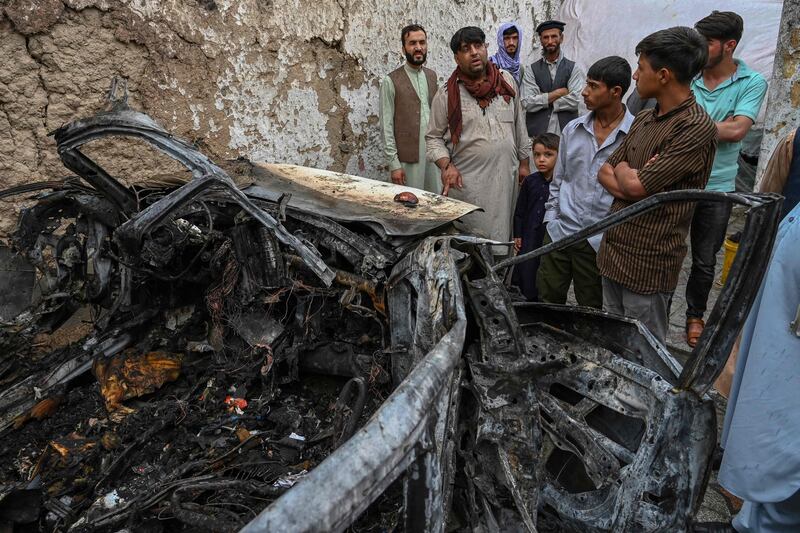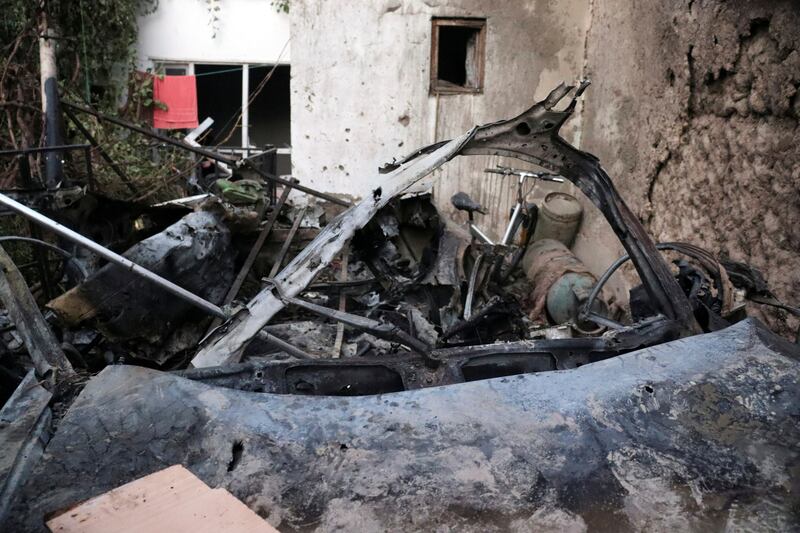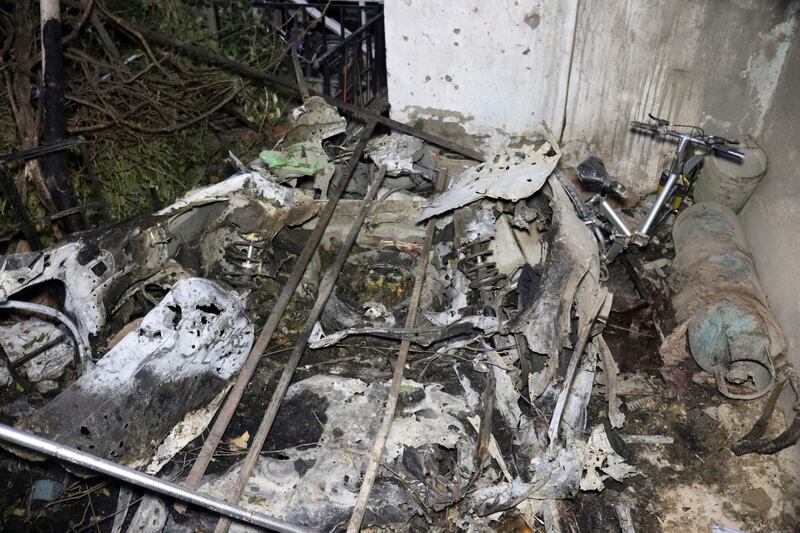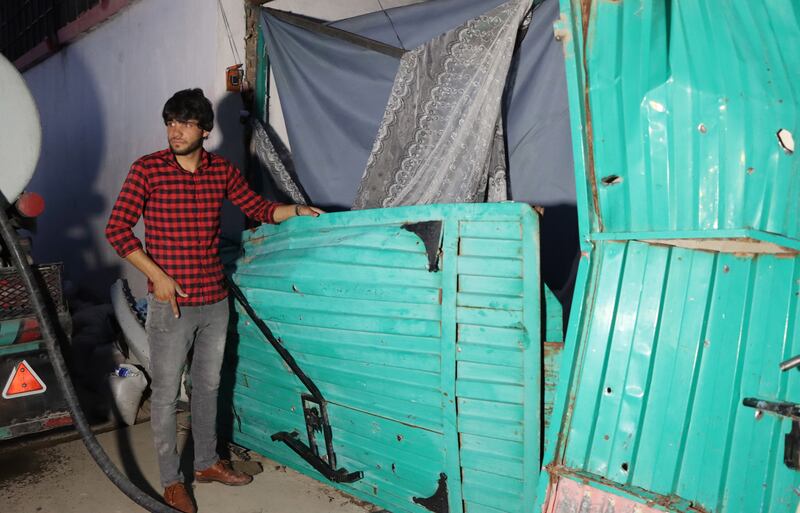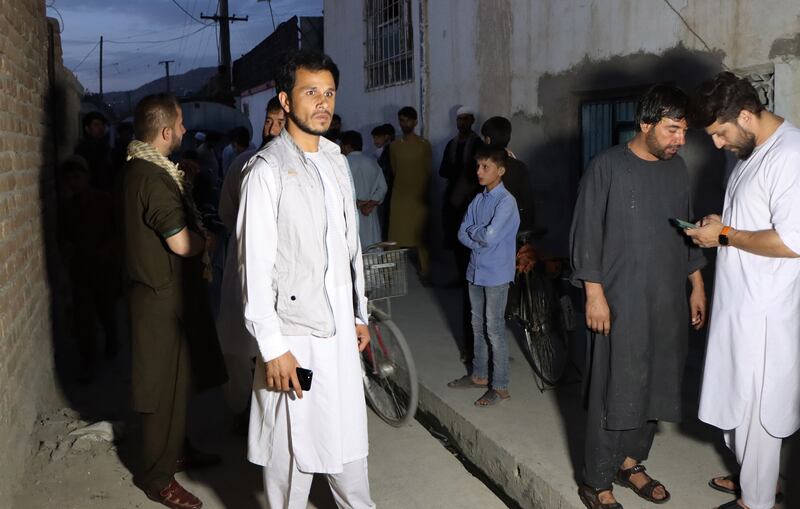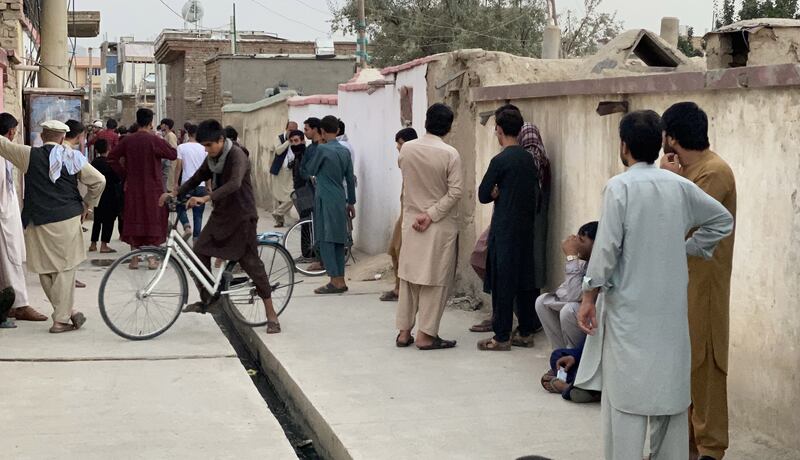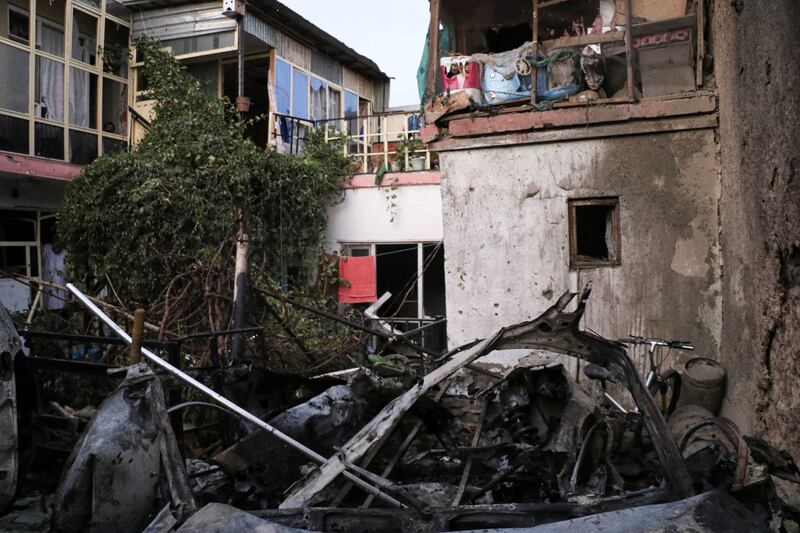A US drone strike may have mistakenly killed an aid worker instead of an ISIS-K member in Afghanistan last month, reports show.
Investigations by The New York Times and The Washington Post suggest there were no explosives in the white sedan that was struck by a US drone on August 29, the day before the US completed its military withdrawal from Afghanistan.
Pentagon spokesman John Kirby on Monday said there has been nothing to change the view that last month's drone strike “prevented an imminent attack” at the Kabul airport. Gen Mark A Milley, chairman of the Joint Chiefs of Staff, at the time called the operation a “righteous strike” that prevented an attack by ISIS-K.
“We will be as transparent about the outcomes as we can be,” Mr Kirby said about an ongoing US Central Command probe into the event.
Secretary of State Antony Blinken meanwhile told Congress the strike was “being looked at very, very, very carefully by others in the administration so that we understand exactly what happened."
The Times reported that military officials were unaware of the driver's identity when the drone fired, but thought he may have had ties to ISIS because of his activities that day. Officials said he may have visited an ISIS safe house and loaded what they perceived to be explosives into the vehicle.
The driver was identified as Zemari Ahmadi. His employer, a California-based aid group, said his movements were in accordance with his duties for the non-profit and his activities may have been misinterpreted by the military, according to The Post.
A video analysis by The Times showed that he and a colleague were loading canisters of water into his trunk - not, as the military alleged, explosives.
Steven Kwon, president of the California-based Nutrition and Education International, denied the charity had any links to ISIS-K.
“We're trying to help people,” Mr Kwon told The Post. “Why would we have explosives to kill people?”
The Post reported that the US military had “credible intelligence” that a second assault at the Kabul airport was likely and that the car would be used for that purpose. The decision to strike the car once it pulled into the courtyard was made to minimise or avoid harm to civilians.
US officials said a larger explosion took place after the drone strike, justifying their actions, but The Times report found no evidence of a second explosion, and added that there was only one dent in a nearby gate and no signs of an additional blast such as blown-out walls.
Military officials have so far acknowledged that three civilians were killed in the strike, but Mr Ahmadi's relatives said that 10 members of the family - including seven children - were killed.
